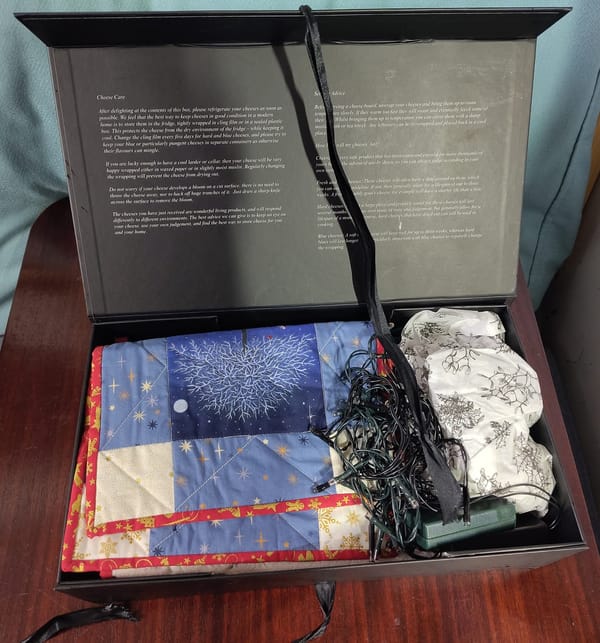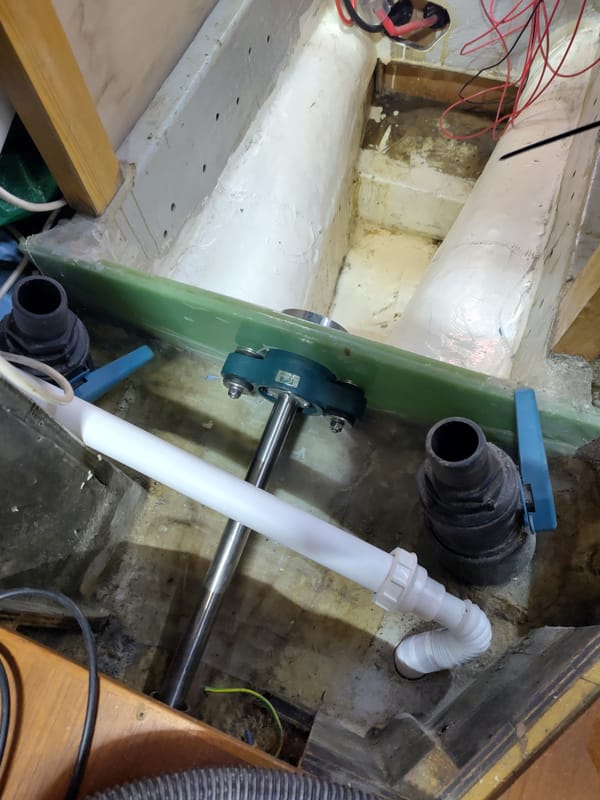Sailing UMA scary delamination. Are we ok?
This video from the lovely Sailing UMA is scary.
It does end on a cliffhanger. We see that the test model they built failed catastrophically. They built a small section of GRP intended to replicate the original hull. They added a foam core rib, covered it with GRP and then a foam core stringer, also covered with grp. But when tested the ribs and their grp covers very easily fully delaminated from the "hull".
I've read some of the comments, it is clear that Dan and Kika have talked to a lot of experts about the problem and the video hints that they have continued. Therefore, it is likely that they have concluded that the problem with the model is limited to the model and the real work on Uma, being done by contractors, does not have the same issues.
The seemingly more informed comments have focused on the following potential causes for the delamination of the rib/stringer structure from the "hull".
- Laminating onto a cured surface that had been covered with peel ply. There are claims of chemical residue from the peel ply (the very thing that allows it to be peeled off) and the reduced mechanical bond caused by the smooth surface left by the peel ply.
- Using vinylester resin instead of epoxy. The mechanical bond is much lower (and will be even more so if bonding to old polyester resin surfaces).
- The foam used for the rib/stringer core was smooth and not designed to soak up resin for a good bond.
So, with all the fibreglass work we have been doing to Vida should we be concerned?
Fortunately, our 1977 Rival 38 is built very differently from Uma (a 1972 Pearson 36), the scale of our refit has been very different and so have our techniques. In more detail
Original build differences.
- Pearsons were designed and built for coastal cruising (at least according to Dan and Kika). Rivals were designed and built for ocean cruising, many have circumnavigated without problems (consider the amazing Sailing Brothers now in New Zealand having sailed from the UK in their Rival 34 of a similar age to Vida).
- Through the Rival Owners Association, we have the design and construction drawings which include details of the GRP layup specification. A Yachting Monthly article from 2013 about buying a second-hand Rival 34 said "These yachts were extremely well built (to Lloyd’s Register 100A1)"
- Unlike Uma, our Rival was build with GRP covered foam core stringers.
- Unlike Uma, all our bulkheads are properly tabbed to the hull and we haven't found any failures in the attachment of any bulkheads.
Scale of refit
- We have not gutted the interior. We have made only small changes to existing bulkheads.
- A new opening in the aft cabin to the bunk area, but we have added massive strengthening (new uprights, lots of extra grp in right angle sections, new beam right across the deckhead).
- We cut off some of the extra from the galley semi bulkhead (but did not change anywhere it was attached to the hull and deckhead, plus we have added an additional forward bulkhead to the galley).
- We have removed the knees for the main mast cap shroud chainplates. This has allowed us to fit huge FR45 backing plates and we are replacing the knees with double knees (separated just enough for the knot of our dyneema chainplates.
- We have added additional watertight semi-bulkheads. In the forecabin two vertical and one horizontal to create 2 sealed watertight compartments (one filled with foam). For the drive shaft a new thrust bulkhead.
- We were concerned about the strength of the deep bilge at the after end of the keel. We have added epoxy including epoxy foam. Added a plywood floor on top of that, sealed it with epoxy and then fibreglassed a minimum of 3 layers of fibreglass on top.
Techniques
- We have only used Epoxy resin for its superior bonding to the original polyester resin.
- We have not used any peel ply. We have always roughened surfaces with either a gringer or coarse grit sandpaper. We have always wiped clean with acetone before epoxy.
- Whereever we have fitted a new bulkhead to the hull we have first epoxied and fibreglassed a strip of plywood or structural foam to the hull to avoid hard spots. The bulkhead tabs have then covered the strip and beyond.
- All right angle joints have been filleted with thickened epoxy.
- We have used very oversized FR4 backing plates bedded onto thickened epoxy everywhere.
Extras
We have made other changes that should improve strength and safety.
- We have removed all through hull fittings (apart from new composite cockpit drain through hulls and seacocks). We filled the holes using the West Systems recommended technique.
- We are creating multiple watertight crash buklkheads
- We are building a coffer dam around the only holes in the boat (cockpit drains and propeller shaft)
- Our watertight battery box and the coming main watertank add extra strength and watertight compartments.
Conclusions
- We started with a much stronger hull.
- We have removed almost no strength
- We have added a lot of strength with better materials and better techniques than were used for the Uma model.
So do we have any concerns? The bond for the new, extra galley bulkhead has been a concern. From our first video we were warned that we might have only ground off enough to bond to clean flocoat rather than to the fibreglass itself. Following that we went back and did grind much deeper. We now feel that we are ok. In any case this is for an additional bulkhead rather than a replacement.
We hope and are pretty confident that Uma are going to be ok, it seems likely the problem is confined to the model rather than the real structure. Even if we would not have made all the same choices it seems very likely that Uma will indeed be much stronger and safer after this refit. The chances of a major delamination in the future are probably very slim.




